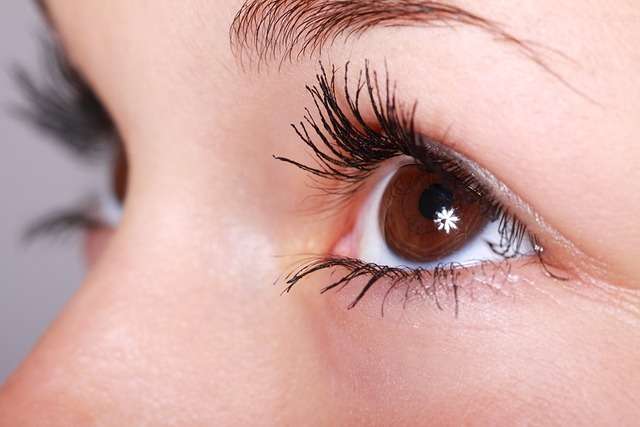Maintaining good health is a fundamental aspect of leading a fulfilling life. Early disclosure and recognition of illnesses play a crucial role in preventing potential complications and improving treatment outcomes.
Many diseases can be effectively managed or even cured when identified at their early stages. Therefore, being able to recognize the signs of illness promptly is of utmost importance.
The human body possesses numerous intricate systems that work together to maintain optimal health. Surprisingly, one of the most revealing indicators of our overall well-being can be found right in our eyes.
The eyes are often referred to as the “windows to the soul,” but they can also provide valuable insights into our physical health, including conditions such as ocular melanoma and diabetes. Through careful observation by eye doctors and understanding of certain eye-related symptoms, such as changes in color, shape or appearance, we can potentially uncover early signs of various illnesses, including those affecting the optic nerves and seek appropriate medical attention.
The purpose of this blog is to shed light on the connection between our eyes and our overall health. By examining specific eye symptoms, such as changes in color, shape or appearance and considering the presence of a blue ring around the iris, we can potentially identify potential underlying health issues. Regular full eye exams and examinations, in addition to a comprehensive health plan, are essential for early disclosure and intervention.
The Anatomy of the Eye
A brief overview of the eye’s structure and function
To understand how the eyes can provide insights into our health, it is important to have a basic understanding of their structure and function.
The eye is a complex organ responsible for the sense of vision. It consists of several key components, including:
Cornea
The transparent, dome-shaped front part of the eye focuses light onto the retina.
Iris
The colored part of the eye controls the amount of light entering the eye by adjusting the size of the pupil.
Pupil
The adjustable opening in the center of the iris allows light to enter the eye.
Lens
A clear, flexible structure located behind the iris that further focuses light onto the retina.
Retina
A layer of light-sensitive cells at the back of the eye converts light into electrical signals.
Optic nerve
Transmits the electrical signals from the retina to the brain, where they are interpreted as visual images.
How various parts of the eye contribute to visual health
Each component of the eye plays a crucial role in maintaining visual health. The cornea and lens of dry eyes help to focus incoming light onto the retina, ensuring clear and sharp vision.
The retina contains specialized cells called photoreceptors that capture light and send signals to the brain for image processing. The optic nerve acts as a conduit, transmitting these signals to the brain’s visual centers for interpretation.
In addition to these essential components, it’s important to consider potential health problems that can affect the eyes. One such condition is optic neuritis, which involves inflammation of the optic nerve and can cause vision loss or blurriness. Optic neuritis can occur due to various factors, including plaque deposits inside the optic nerve or increased pressure within the eye.
It is recommended that American adults regularly have their eyes examined by a qualified eye care professional to monitor their visual health. This is particularly crucial for older adults and individuals who may be at an increased risk of developing eye-related issues, such as those with a medical condition or a family history of eye problems.
By understanding how the different parts of the eye function and by taking proactive steps to maintain eye health, individuals can minimize the serious risk factor of vision loss and other related complications.
Understanding the connection between the eyes and overall health
The eyes are not isolated organs but are connected to the rest of the body through an intricate network of blood vessels, nerves and biological systems.
Many systemic diseases and conditions can manifest symptoms in the eyes due to this interconnectedness.
For example, changes in blood vessels or nerves in the eyes may be indicative of cardiovascular diseases, diabetes or neurological conditions.
Additionally, certain medications and underlying serious health problems and conditions can affect the eyes directly, leading to specific eye-related symptoms.
Moreover, the eyes can serve as an early warning system for general health issues. Systemic conditions like diabetes, high blood pressure, autoimmune illness and even certain types of cancer can present with distinct ocular signs.
By recognizing these signs, individuals can seek appropriate medical evaluation and potentially receive early intervention for the underlying health condition.
Understanding the relationship between the eyes and overall health allows us to appreciate the significance of eye symptoms and seek appropriate medical care when necessary.
By paying attention to changes in our vision, eye appearance or any other symptoms of eye-related symptoms, we can potentially uncover early signs of illness and take proactive steps toward maintaining our well-being.
Common Eye Conditions and Associated Symptoms
Most Common Eye Symptom and Associated Conditions
Conjunctivitis (Pink Eye)
Symptoms: Redness, itchiness, excessive tearing, discharge, swollen eyelids, sensitivity to light, blurred vision.
Dry Eye Syndrome
Symptoms: Dryness, grittiness, burning or stinging sensation, redness, sensitivity to light, blurred vision, eye fatigue.
Cataracts
Symptoms: Cloudy or blurry vision, difficulty seeing at night, increased light sensitivity due to glare, faded or dull colors, frequent changes in eyeglass prescription.
Glaucoma
Symptoms: Gradual loss of peripheral vision, tunnel vision night blindness, eye pain or redness, seeing halos around lights, headache.
Age-Related Macular Degeneration (AMD)
Symptoms: Blurred or distorted central vision, dark or empty areas in the center of vision, difficulty recognizing faces or reading, straight lines appearing wavy or distorted.
Diabetic Retinopathy
Symptoms: Blurred or fluctuating vision, floaters blurry vision, dark spots or empty areas in vision, difficulty seeing at night, visual loss.
Blepharitis
Symptoms: Red and swollen eyelids, itchiness, flaking or crusting of the eyelashes, burning or stinging sensation, increased tear production and light sensitivity due to light.
Refractive Errors (Myopia, Hyperopia, Astigmatism)
Symptoms: Blurred vision, difficulty focusing on near or distant objects, eye strain, headaches, squinting.
Strabismus (Crossed Eyes)
Symptoms: Misaligned or crossed eyes, double-vision problems, poor depth perception, eye strain or fatigue, tilting or turning of the eye pain head to see better.
Retinal Detachment
Symptoms: Sudden appearance of floaters, flashes of light, shadow or curtain-like vision loss, blurred or distorted vision.
Less Common Signs of Illness in the Eyes
Yellowing of the eyes and liver disease
Yellowing of the eyes, also known as jaundice, can be a common sign of liver disease or liver dysfunction. When the liver and nervous system are unable to process bilirubin (a yellow pigment produced from the breakdown of red blood cells) effectively, it can accumulate in the body and cause a yellowish discoloration in the eyes and skin. Liver conditions such as hepatitis, cirrhosis or liver failure can lead to this symptom.
In addition to liver-related causes, it’s important to be aware of other potential factors that can contribute to the yellowing of the eyes or lead cause serious vision problems. Sudden vision loss can occur due to various reasons, including eye conditions, degenerative diseases or underlying health issues. If sudden loss of double vision is experienced, it is crucial to seek immediate medical attention to determine the cause and initiate appropriate treatment.
Certain sexually transmitted diseases, such as syphilis, can also manifest with eye-related symptoms. Regular check-ups, a comprehensive eye exam and appropriate screening for sexually transmitted diseases are essential to detect and address any potential eye complications.
In some cases, blood tests may be conducted to evaluate liver function and identify any underlying diseases or conditions that may be affecting eye health. These tests can provide eye doctors with valuable insights into the overall health of the liver and help in diagnosing potential liver-related issues that may be contributing to the yellowing of the eyes.
The back of the eye, specifically the retina, is a crucial part of the visual system. It contains light-sensitive tissue and plays a vital role in capturing and transmitting visual information to the brain for processing. Any abnormalities or damage to the retina can impact visual health and may require prompt medical intervention.
If yellowing of the eyes or any other concerning symptoms is observed, it is important to consult an eye doctor or a healthcare professional for a proper evaluation and early diagnosis of both eye-related issues and potential underlying liver diseases. Timely intervention and appropriate management can help preserve eye health and overall well-being.
Swollen or bulging eyes and thyroid issues
Swollen or bulging eyes and thyroid issues are often linked to thyroid disease, including Graves’ disease, an autoimmune condition affecting the thyroid gland. This condition leads to excessive production of thyroid hormones. In some cases, the immune system mistakenly attacks the tissues around the eyes, resulting in inflammation, swelling and protrusion of the eyeballs.
It’s important to note that autoimmune illnesses, such as Graves’ disease, can have a systemic impact on the body. Besides affecting the thyroid, they can also contribute to the development of other conditions, such as heart disease, diabetes and multiple sclerosis. Therefore, individuals with thyroid disease should be mindful of potential risks and monitor their overall health.
Additionally, it’s worth mentioning that the eyes are not the only organs affected by autoimmune illness. For instance hand in hand with, autoimmune disease, conditions like multiple sclerosis can lead to damage in various parts of the body, including the central nervous system. In some cases, retinal blood vessels may also be affected, potentially leading to visual problems.
If you experience any symptoms related to thyroid disease, autoimmune disease, heart disease, retinal blood vessels, or multiple sclerosis, it’s essential to consult with a healthcare professional for accurate diagnosis and appropriate management. Early detection and proper treatment are crucial in managing these conditions and maintaining general health.
Changes in the blood vessels and cardiovascular conditions
The blood vessels in the eyes can provide important clues about an individual’s cardiovascular health, including high blood pressure. Narrowing, thickening, or changes in the appearance of the blood vessels may indicate underlying cardiovascular conditions such as hypertension (high blood pressure), atherosclerosis (hardening of the arteries), or diabetes.
Regular eye examinations by an eye doctor are crucial in detecting these changes and monitoring overall eye health. If any abnormalities are detected during an annual eye exam, further testing and evaluation by a routine eye exam by a healthcare provider specializing in eye exams and cardiovascular health may be necessary.
Moreover, certain systemic conditions like thyroid disease or autoimmune diseases can also affect the blood vessels and overall eye health. In some cases, these conditions can lead to damage or leak of blood out to the brain tumor optic nerve, which can result in visual problems. Therefore, it is important for individuals with such conditions to have regular eye exams to monitor any potential eye-related complications.
Conclusion
The blood vessel eyes serve as windows to our health, providing valuable clues about our overall well-being. Recognizing the signs of illness through the eyes and blood vessel is essential for early detection and treatment of various health conditions.
By our eye doctor and understanding the anatomy of the carotid artery eye and its connection to overall health conditions, we can make eye doctors appreciate the importance of regular and comprehensive annual eye exam and examinations.
Remember, taking care of our eyes with routine eye exams not only promotes good vision but eye exam also contributes to our general health and well-being. So, schedule those routine and regular eye exams and keep an eye on healthy eyes, blood vessel and your health.










